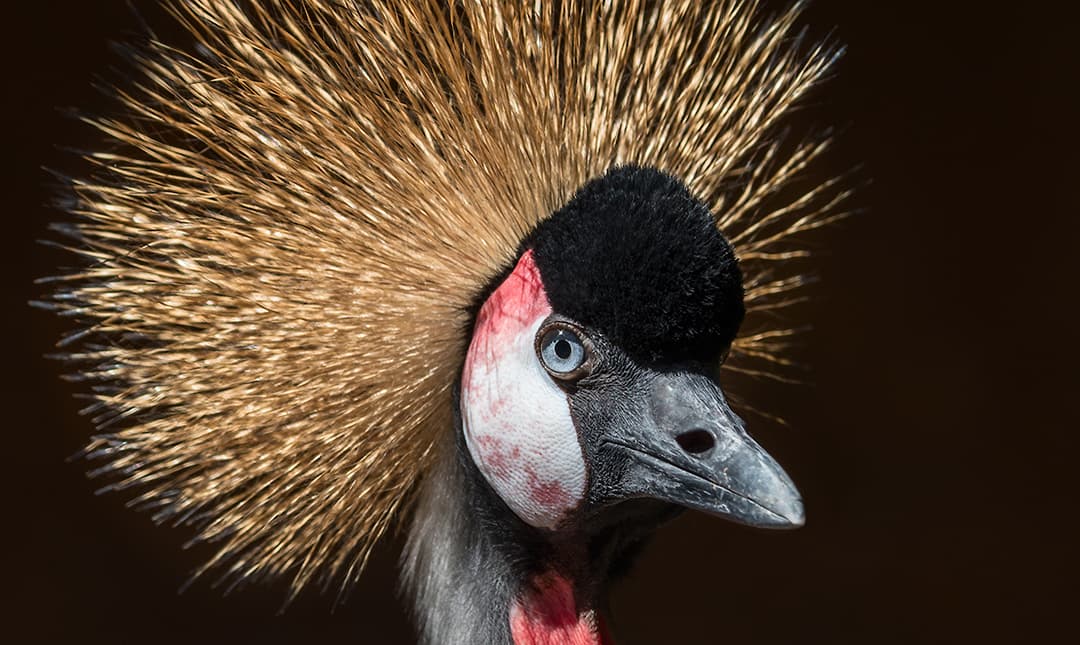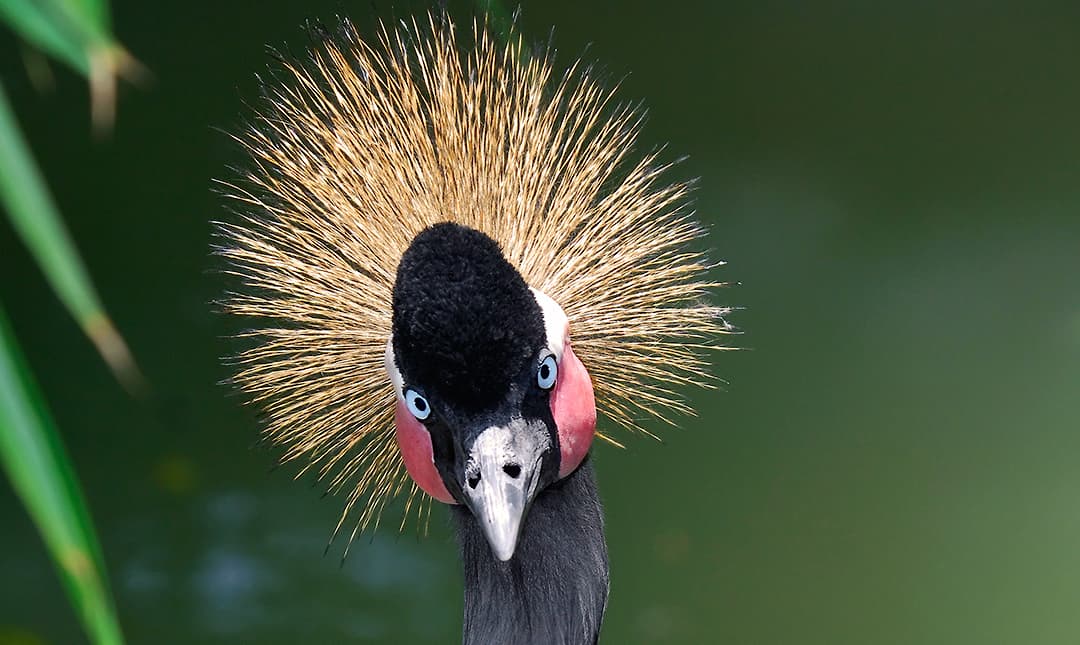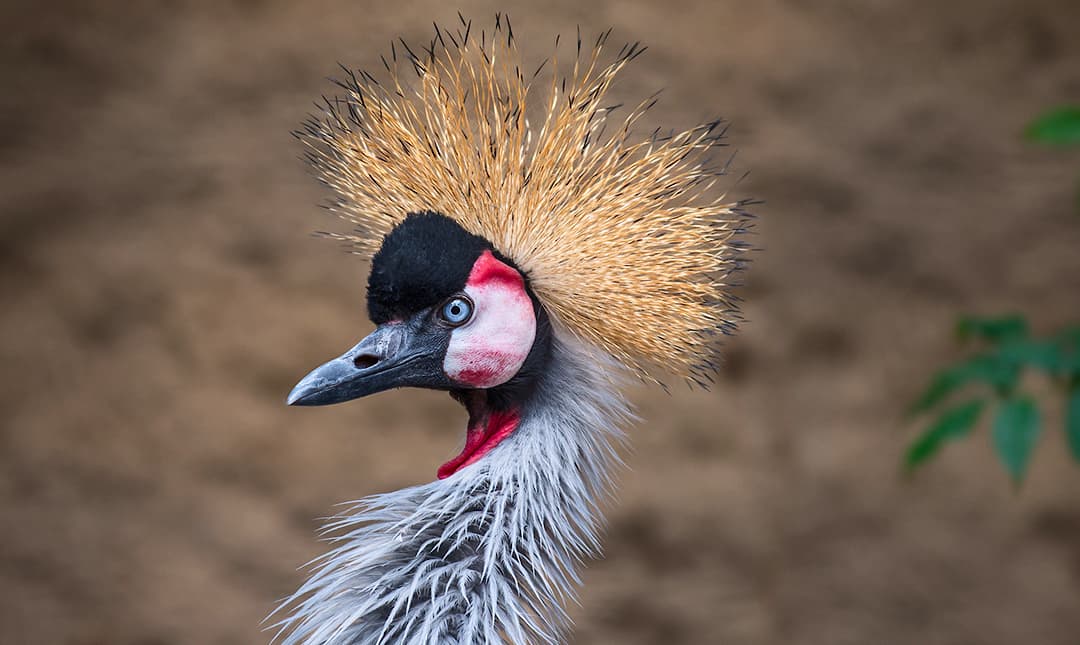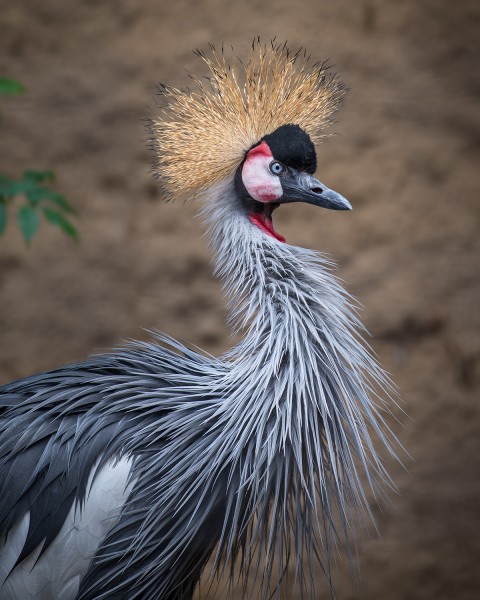About
Crowned cranes are the most primitive of the crane species, with ancestors dating back 40 million years. Dance is an important part of life for these birds. Crowned cranes dance to attract mates, strengthen bonds with their partners, relieve tension, and deflect aggression. Dance moves include bowing, arching the neck back, head shaking, circling, bouncing, and short flights accompanied by loud honking vocalizations.
Crowned cranes are named for the long, stiff, bristly golden feathers that create a halo on their heads, and they are well-adapted for a semi-aquatic lifestyle. With shorter legs than other crane species, they cannot wade into deep water. However, unlike other cranes, these birds can perch in trees thanks to opposable rear toes that allow them to grasp branches. Their beaks are also shorter than those of other species but are sturdy and powerful enough to kill crabs and lizards as well as probe for insects and roots. Cranes will stamp their feet while foraging to flush out insects and then snatch them up to eat. They also follow buffalo and wildebeest to eat insects disturbed by their movements. Crowned cranes are not territorial and will feed in fairly large groups except during the breeding season.
During the breeding season, pairs build nests in wetter habitat with thick vegetation. Both parents contribute to the nest, which is a flat, round platform made from wetland plants. It is usually located on the ground, with parents perching nearby to guard it. If a predator gets too close, the parents will lure it away by pretending to be injured. Both parents incubate the two to four eggs, which hatch in about 30 days. Chicks leave the nest within hours of hatching, and their first flight feathers grow in within three months. Dance lessons start early—even young chicks may join the dancing adults.
It is estimated that there are fewer than 22,000 African gray crowned cranes in the wild. Threats include loss of wetlands, pesticides, and the illegal collection of birds and their eggs.
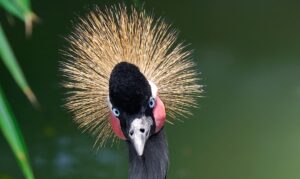
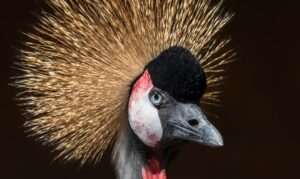


Habitat
Crowned cranes are found in wetland and grassland habitats in eastern Africa.
Diet
These omnivorous birds eat insects, grass seeds, invertebrates, reptiles, and some small mammals.
PHYSICAL CHARACTERISTICS
These birds average 3.5 feet in height with a wingspan of six feet. They weigh roughly 15 pounds and have a lifespan of 20 to 25 years.
LOCATION WITHIN THE ZOO
You may see this bird in the World of Birds Show.

